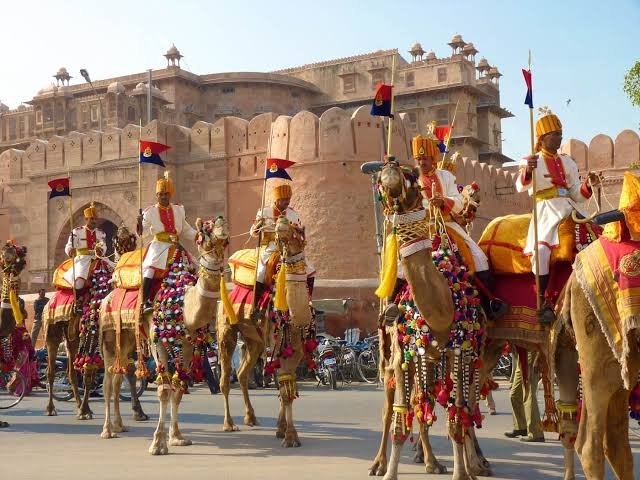Bikaner before the rise of Rathores (Part 1)


This series of articles will feature the history of Bikaner, right before it’s founding by Rao Bika in the fifteenth century. The region from the ancient times was known as Jangaldesh and finds a mention in the Mahabharata.
Janglu: Or Jangalakupadurg (also known as Ajaypur) was said to have been founded by a consort of Prithviraj Chauhan, Queen Ajaydevi Dahiyani. It was being ruled by Sankhla Parmars on the eve of Rathore Conquest. This line was descended from the main branch that held the lands around Roon in Marwar. One Rai-Si who was the grandson of third Rana of Roon decided to seek his fortunes elsewhere and arrived in Janglu, then under the sway of Dahiyas. He initially established his authority over Raisisar , a village near Janglu, possibly named after him. Soon thereafter, he managed to thwart the Dahiya hegemony over Janglu by defeating and slaying the local ruler thus planting the Sankhla rule in the region.
He was succeeded by his son Lakhan-Si to whom is attributed the town of Lakhansisar. He was followed by Khinv-Si whose daughter was married to the Rawal of Jaisalmer, Karan Deva in 1324 CE. This woman , as per the inscriptions found, ordered the excavation of a water tank at Vasi, some 24 km North West of present day Bikaner.
Sankhlas continued to rule the region thereafter which became an important link point in the various trade routes that cris-crossed the region. Janglu’s increasing prosperity soon attracted the notice of its more rumbustious neighbors who salivated at the prospect of bringing the region under their mastery so as to grab their share of the riches. Soon enough, the country started facing depredations from Balochis, Bhatis, Mohils and other groups who sought to dislodge the Sankhlas from Janglu thereby annexing it for themselves. The continued plundering and ravaging greatly weakened the Sankhlas who saw their position becoming increasingly tenuous with passing time.
Driven from Janglu as a result of this in the later part of fifteenth century, Napa Sankhla, a descendant of Rai-Si and son of Manakpal, sought sanctuary at the court of Rao Jodha, founder of Jodhpur. This was a period of an aggressive Rathore expansion with the fortunes of clan seeing a new uptick. Various scions of this old family had independently carved out for themselves, autonomous spheres of influence, which led to, in a short amount of time, a large swathe of land in Western Rajasthan, coming into the possession of the mighty Rathores. It was this Napa Sankhla who managed to persuade Bika, the eldest son of Rao Jodha, to try for a fresh conquest of the Jangaldesh which, at the time ,was undergoing through a period of anarchy and turbulence with various disparate group vying hard to control the different parts of the land.
Napa Sankhla not only provided the valuable information about the land, geographical features and the social milieu, he also agreed to act as a guide across the harsh intervening terrain, greatly aiding Bika in his bid to found a new kingdom. Needless to say, He actively helped Rao Bika in his conquering. In acknowledgement of this, Bika granted to Napa and his descendants, in perpetuity, the keys of the fort of Bikaner.
DISCLAIMER: The author is solely responsible for the views expressed in this article. The author carries the responsibility for citing and/or licensing of images utilized within the text.
